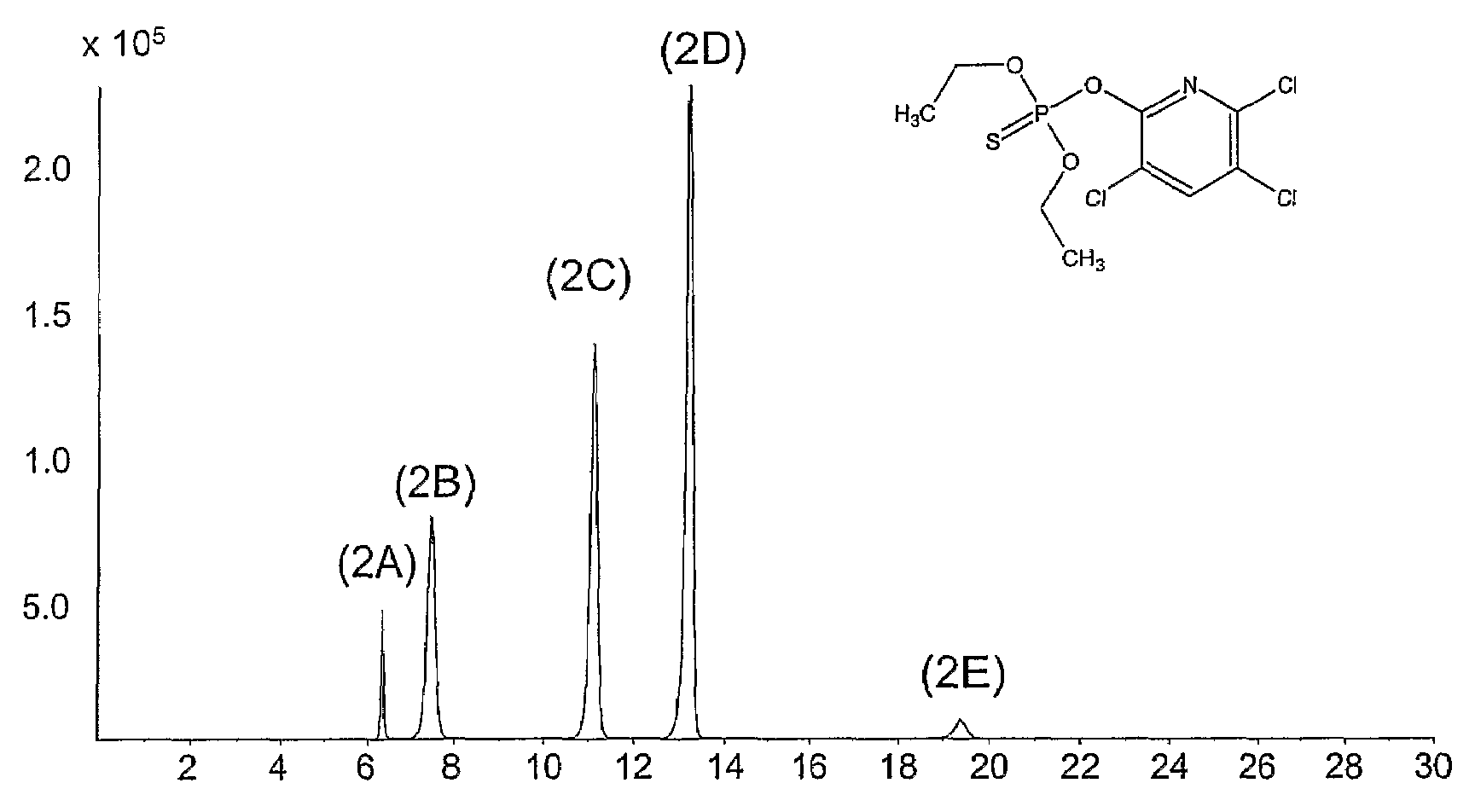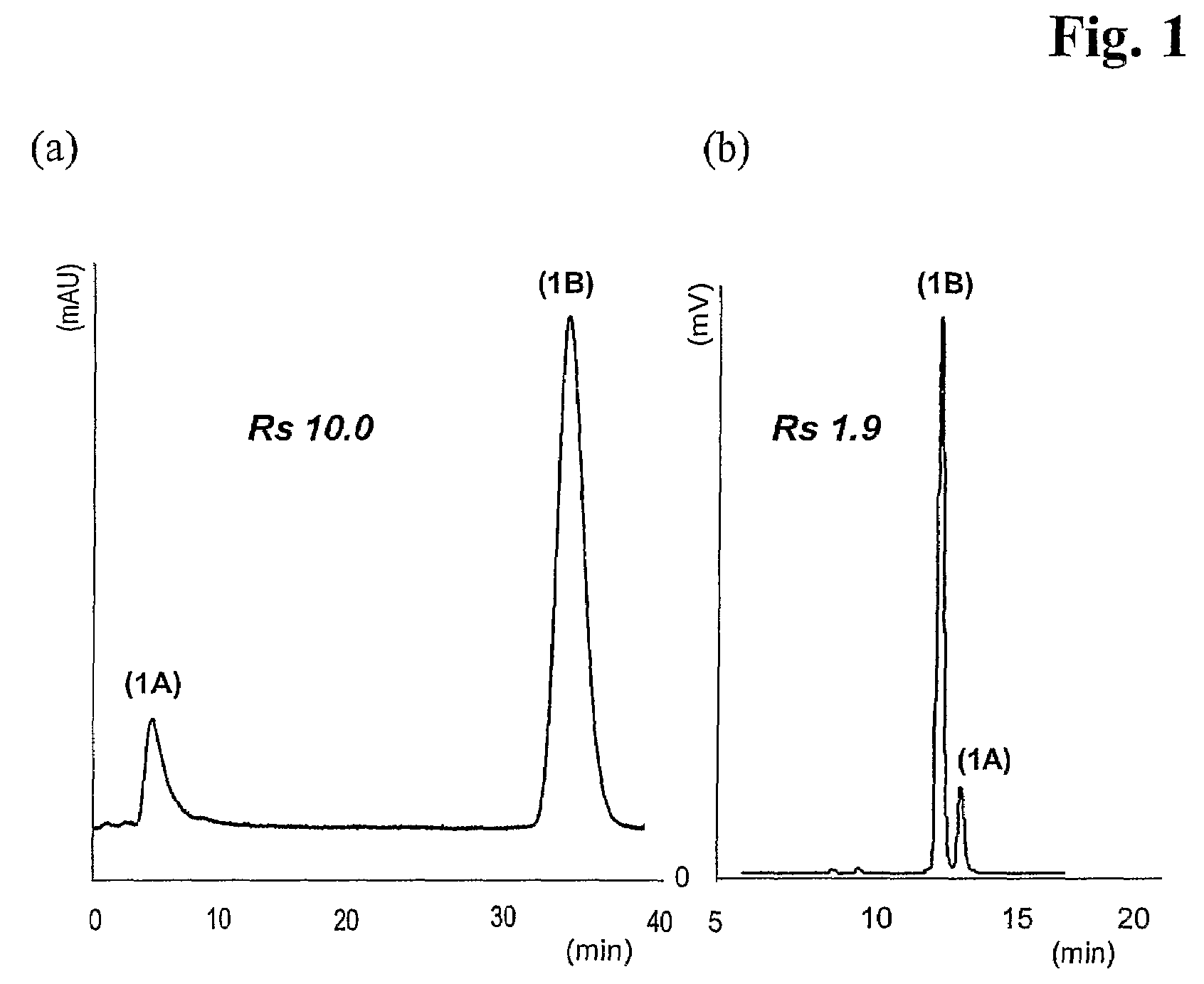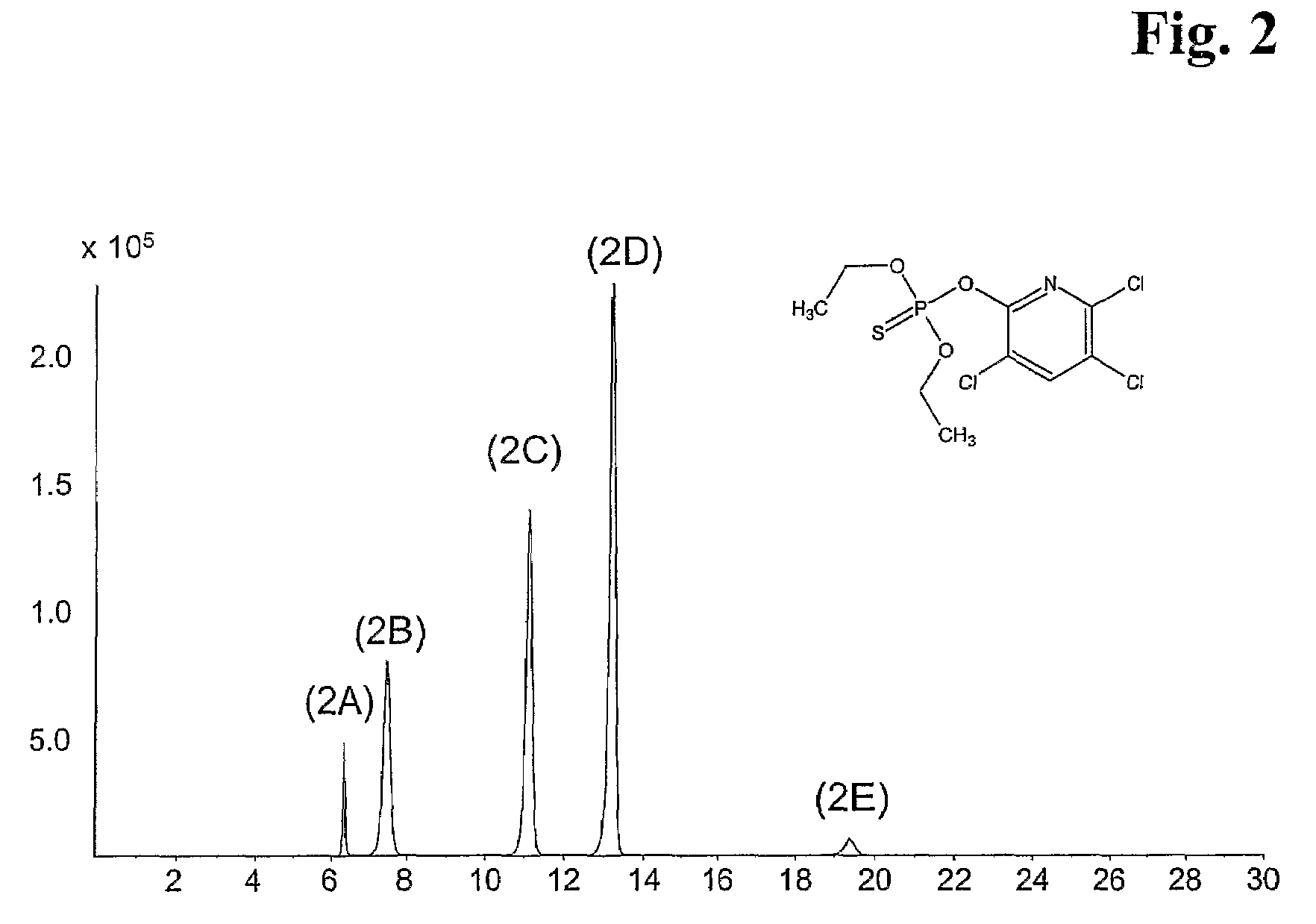Mixed-modal anion-exchanged type separation material
a technology of anion exchange and separation material, which is applied in the field of new sorption and separation materials, can solve the problems of insufficient resolution, one purification problem not yet satisfactorily solved, and failure in particular of very hydrophilic or also very hydrophobic peptides and structurally closely related peptides
- Summary
- Abstract
- Description
- Claims
- Application Information
AI Technical Summary
Benefits of technology
Problems solved by technology
Method used
Image
Examples
examples
A Synthesis Examples
example a1
RP / WAX Based on Thiol-Modified Silica
[0105]The synthesis is outlined in Formula VI, wherein the waved lines represent the support based on silica:
[0106]
a) Synthesis of the Selector
[0107]3-Aminoquinuclidine dihydrochloride (26 mmol) is treated for 3 hours with a two-fold molar excess of a freshly prepared sodium methoxide solution in methanol to liberate the free base. The precipitated sodium chloride is removed by filtration and the filtrate is evaporated to dryness. Chloroform is added and to the mixed and cooled suspension a solution of 10-undecenoic acid chloride (22 mmol in chloroform) is slowly added by dropwise addition. The reaction is allowed to proceed for 18 h at room temperature.
[0108]From the reaction mixture the N-10-undecenoyl-3-aminoquinuclidine selector is extracted with aqueous 2M sodium hydroxide and chloroform (3×). The combined organic phases are dried with anhydrous sodium sulfate and then evaporated to dryness. After drying under vacuum an oily yellowish produc...
example a2
Immobilization of RP-WAX on thiol-Modified polyglycidylmethacrylate Beads
[0113]5 g of polyglycidylmethacrylate beads Fractogel® EMD epoxy (M) (Merck, Darmstadt, Germany) (1.5 mmol epoxy groups / g beads) or Suprema® 1000 (Polymer Standard Services, Mainz, Germany) are suspended in 160 mL of a reagent solution containing 8.2 g of sodium hydrogen sulfide dissolved in a mixture of 50 mM phosphate buffer, pH 8 and 2-propanol (4:1, v / v). The suspension is sonicated and purged with N2 (each 5 min). The suspension is mechanically stirred for 20 h at 60° C. After filtration, the derivatized beads are washed with 0.1 M HCl, water, and then MeOH. The thiol-modified particles are dried overnight under vacuum and subjected to elemental analysis, which yields the following results:
[0114]
Sorbent% C% H% N% SSuprema ®51.846.680.077.40Fractogel ®51.057.140.054.00
[0115]This corresponds to a thiol-loading of 1.25 mmol sulfhydryl groups / g modified beads for the Fractogel® material and 2.31 mmol sulfhydry...
PUM
| Property | Measurement | Unit |
|---|---|---|
| pH | aaaaa | aaaaa |
| pH | aaaaa | aaaaa |
| length | aaaaa | aaaaa |
Abstract
Description
Claims
Application Information
 Login to View More
Login to View More - R&D
- Intellectual Property
- Life Sciences
- Materials
- Tech Scout
- Unparalleled Data Quality
- Higher Quality Content
- 60% Fewer Hallucinations
Browse by: Latest US Patents, China's latest patents, Technical Efficacy Thesaurus, Application Domain, Technology Topic, Popular Technical Reports.
© 2025 PatSnap. All rights reserved.Legal|Privacy policy|Modern Slavery Act Transparency Statement|Sitemap|About US| Contact US: help@patsnap.com



